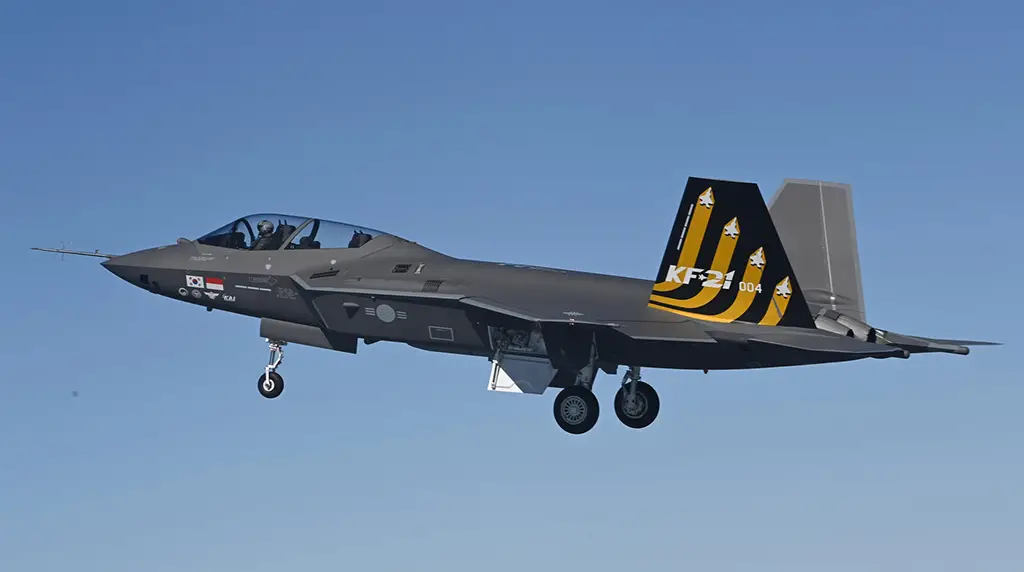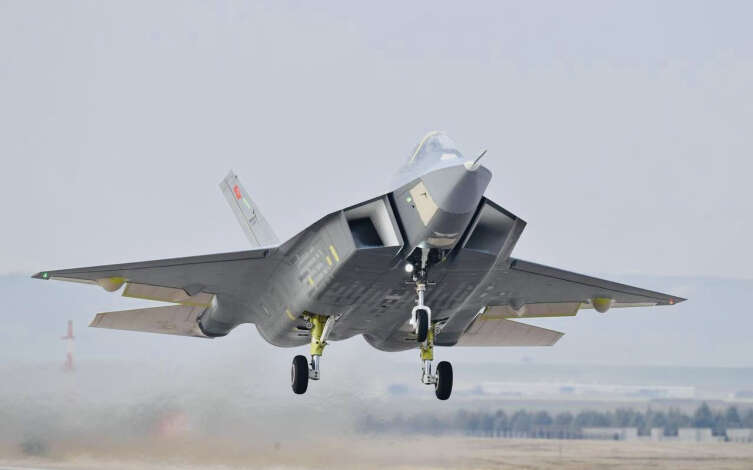The Republic of Korea Air Force (ROKAF) unveils three new variants for KF-21 fighter jet. This next-generation fighter jet, also known as the “Hawk,” is not only set to bolster South Korea’s airpower but also aims to secure a strong position in the global arms market. Recent developments have revealed plans for three distinct variants of the KF-21, each designed to meet specific operational needs and enhance the aircraft’s capabilities.
Table of Contents
KF-21 Boramae new three variants
- KF-21 EA version
- KF-21 EX version
- KF-21 SA version
KF-21EA: The Electronic Warfare Specialist
The KF-21EA is based on the two-seat KF-21B model and is designed for electronic warfare missions.
Key features include:
- A dedicated Electronic Warfare Officer (EWO) station in the modified rear cockpit
- Two Electronic Intelligence (ESM) devices
- Three Electronic Attack (EA) devices
- Capability to disrupt enemy ground-based air defense systems
- Armament with anti-radiation missiles like the AARGM-ER for SEAD (suppression of enemy air defenses) missions
This variant is poised to play a role similar to the US Navy’s EA-18G Growler, providing crucial electronic warfare support to friendly aircraft during operations.
KF-21EX: Aiming for 5th Generation Capabilities
The KF-21EX variant represents South Korea’s ambition to compete with fifth-generation fighter jets.
Its standout features include:
- An internal weapon bay (IWB) for reduced radar signature
- Capacity to carry four Meteor long-range air-to-air missiles or eight smaller air-to-ground munitions in the IWB
- Integration with the Next Air Combat System (NACS), leveraging unmanned aerial vehicles and satellite data links
- This variant aims to achieve true fifth-generation stealth characteristics, significantly enhancing the KF-21’s combat capabilities.
KF-21SA version
- The Export-Oriented Model
- Designed with potential international customers in mind
The KF-21 SA offers
- Base specifications similar to the ROKAF variant
- Customization options for weapons and internal equipment
- Flexibility to meet individual country requirements
While final configurations remain undetermined, negotiations with potential buyers, including Indonesia, are already underway.
Also read this: Top 10 Military Drones of 2024: Capabilities and Features
Challenges and Future Prospects for KF-21 Fighter Program
Despite the ambitious plans for these variants, the KF-21 program faces several challenges:

Extended Development Timeline: Full-scale development of these variants could take more than a decade, particularly for the KF-21EX, which aims for fifth-generation performance.
Funding and Research Requirements: Significant additional research and funding are needed before full-scale development can commence.
Market Competition: The global market for fourth-generation fighters is highly competitive, potentially impacting the KF-21’s export potential.
Collaboration Uncertainties: Recent allegations of technology theft by Indonesian engineers have led South Korea’s Defense Acquisition Program Administration (DAPA) to reconsider the joint development agreement with Indonesia.
Despite these challenges, the KF-21 program continues to progress. The baseline KF-21 Boramae successfully completed its first flight on July 19, 2022, and is currently designed as a “4.5+” generation fighter. It boasts a low-RCS design and is larger than the F-35, potentially offering greater capabilities than the latest F-16V.
The Road Ahead
The ROKAF plans to replace its aging McDonnell Douglas F-4 Phantom II and Northrop F-5 fighter jets with the KF-21. Mass production of the baseline KF-21 is scheduled to begin in 2026. While the development of the three new variants presents significant hurdles, South Korean defense experts emphasize the importance of pursuing these advancements to enhance the KF-21’s export competitiveness and overall capabilities.
As the program moves forward, the global aviation community will be watching closely to see how the KF-21 Boramae and its variants evolve, potentially reshaping the landscape of modern air combat capabilities.

